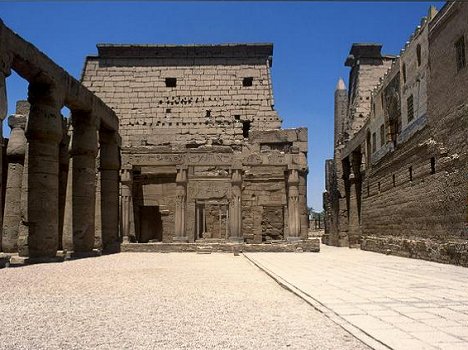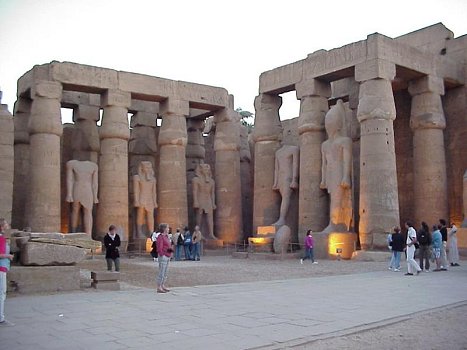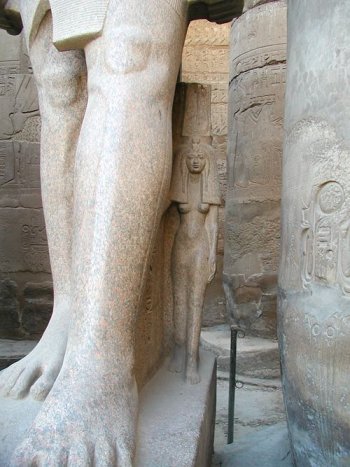 |
After entering the Courtyard of Ramses II, turn around and look behind you. In the northwest corner of the courtyard, nestled against the back of the Great Pylon lies the remains of one of the oldest shrines to Amun in the city, this one constructed by Hatshepsut and Thutmose III. Each of the openings is consecrated to a different member of the Theban Triad: Amun, Mut, and Khonsu. The shrine is fronted by four papyrus bundle columns. We'll see more of those in Amenhotep's Solar Court later, but for now, let's return to Ramses's Courtyard.
 |
You will notice that, aside from the portion that has been given over to the mosque, the entire area is surrounded by a double row of closed bud papyrus columns. This portion of the temple is an example of what is known as a peristyle hall. The difference between a peristyle hall and a hypostyle hall is the lack of a roof. A peristyle hall is a courtyard surrounded by columns. A hypostyle hall has a roof or ceiling that encloses the columns. This one is sometimes referred to as the Pharaoh's Gallery due to the colossal statues of pharaoh interspersed between the columns. Notice, if you will, that the standing figures are all shown with the left leg forward, as though striding into the future. This is one of the few conventions in colossal Egyptian art used to covey movement and, perhaps, leadership. Most statues depicted with both feet together are created as mummiform figures to represent the king as Osiris.
 |
If you look closely, you will again see that the statues include the small figure of a woman. The inclusion of Nefertari in so many of the statues, inscriptions, and carvings of himself is but one indication of the esteem in which Ramses held this most favored queen. His renown devotion to her extended even beyond death. Her tomb in the Valley of the Queens is believed by many to be the most beautiful Egyptian tomb ever discovered.